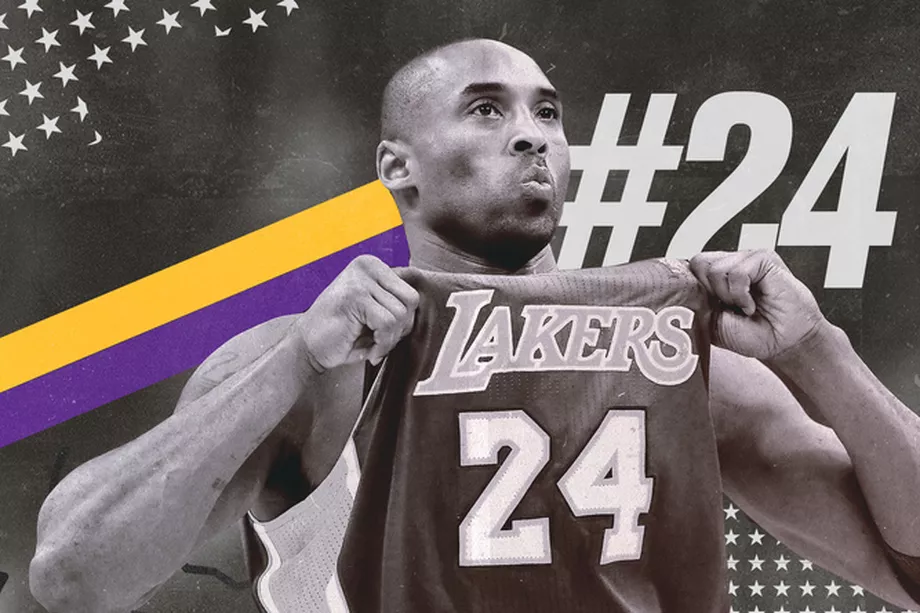Kobe Bryant was a master plotter, always two steps ahead when it came to branding himself, plotting his business ventures, building his lore. He was calculating in the best and worst senses of the word. He gained a keen understanding of how to play personalities and the media fairly early on.
Kobe was clearly a chess player when it came to his off-court work — strategic and ruthlessly efficient. He spent hours meticulously working on the craft of basketball, notably his footwork, which was the best among any guard the league has ever seen. He was obsessed with perfecting the minutia that could give him any edge, no matter how small.
The famous Jacob Weinstein illustration from the first FreeDarko book of Kobe building a ship in a bottle with prior attempts smashed all around him remains the best way to capture Kobe’s focus and obsession.
This was always in stark contract to Kobe in the throes of basketball under the bright lights. Kobe always played like there was no tomorrow.
Kobe never had any trouble rising to the occasion in fourth quarters or Game 7s because he played every minute like it was crunch time and every game like a playoff series hinged on it. He missed shots and fell short sometimes, but never because he was unwilling to put the team on his shoulders and carry it. He was never afraid of the moment, never afraid of missing.
He put everything on the line every night, never hesitating or calculating the impact of his decisions.
Of course, he could play in that style so confidently and successfully because of all the work he’d methodically put into his game during his obsessive practices. He made himself a basketball player as perfect as he could be given his physical tools — there was no edge Kobe had ignored in crafting himself.
Except, of course, there was no changing the passion with which he played, which often resulted in him taking every clutch shot, some of which he missed due to be being off-balance or well-guarded. Sometimes, his abandon hurt the Lakers. It almost cost them at least one championship (2010).
This dichotomy is what helped make Kobe such a fascinating player. The combination of meticulous craftsmanship and irrational confidence brewed something magical.
At times, the meticulous work often felt like a feint, a show for the cameras to build his lore. Only in recent years as Kobe took off what we thought was a veil did we realize what we saw as positioning was really him all along.
The Black Mamba wasn’t an act: Kobe was the black mamba personified, playing “Moonlight Sonata” on his piano to ease his mind after a tough loss and hitting the weights at 5:30 the next morning; triaging his own torn Achilles to take the free throws before being carted off; hollering about beating the s**t out of metaphorical bears.
It was never so much that he was psychotically detailed and focused on the margins of minutia and also obsessed with being brightest star every night. It’s that he was psychotically detailed and focused on the margins of minutia because he was obsessed with being the brightest star every night. And he knew because of his prodigious talents and legendary work ethic that no one was as prepared as him.
He wanted to take every shot and was prepared to treat every game like his last because he didn’t see any other choice in the matter. He knew what he had done to prepare for the moment. He could count on that.
That style of play, backed up by all the work he let us peek at, is why Kobe is your favorite player’s favorite player. And it’s why it’s both true to say there will never be another Kobe Bryant and that there are a thousand little Kobe Bryants out there. He taught a generation how to work like there was no roof on perfection and how to play like there was no tomorrow.
No commentary on Kobe’s life or legacy is complete without discussion of the horrific crime of which he was accused in 2003. A 19-year-old hotel employee in Colorado accused Kobe of rape, and he was charged. Prosecutors dropped the charges when the alleged victim declined to testify. Bryant settled a civil suit with the alleged victim while maintaining his view that the sexual encounter was consensual.
In the aftermath of the case, Bryant lost his endorsements and his popularity dropped significantly (as evidenced by lower jersey sales). Eventually, Kobe regained his endorsements and popularity without a reckoning satisfactory to many. Much of the image we now identify with Kobe, including the Black Mamba, was birthed from this time period.
All of image-making we’re talking about here followed the allegations of horrific behavior, but in my opinion, was not a response to it. It is also important not to confuse the discussion of his actions off the court with the far narrower conversation about his identity as a basketball player. That’s how I see the complicated, difficult image he leaves behind. It’s completely understandable that others would see it differently. I fully respect that.
